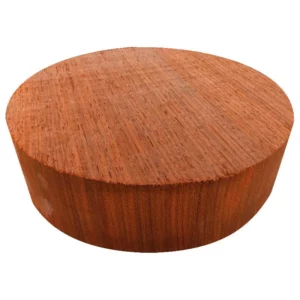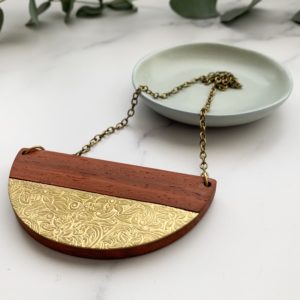/pa’dauk/
Exploring Padauk Wood: Beauty, Symbolism, and Sustainability
In the world of woodworking, few materials capture the imagination quite like Padauk wood. Scientifically known as Pterocarpus, this tropical hardwood is a prized gem for artisans and enthusiasts alike. Today, we are spotlighting Padauk wood, identifying its exotic origins to its symbolism and the pressing issue of sustainability.
A Symphony of Beauty and Resilience
Padauk wood boasts a rich, reddish-orange heartwood that sets it apart from the ordinary. Its fine texture and straight, interlocked grain make it a favorite among craftsmen. What’s more, when freshly cut, Padauk releases a sweet, floral fragrance – a sensory delight for those who work with it. As time marches on, this wood gracefully matures, gaining character and depth, much like life itself.
Origins and Challenges
Padauk wood primarily hails from tropical regions across Africa and Asia. However, it faces a dire threat from illegal logging, especially in Southeast Asian nations like Myanmar and Thailand. This illicit trade disrupts the delicate balance of biodiverse forests and puts the Burmese Padauk species on the brink of commercial extinction.
Sustainability is a complex issue, dependent on the wood’s source. African Padauk often comes from responsibly managed forests, with Tanzania leading in sustainable forestry practices. In contrast, many Asian regions grapple with illegal logging, adverse effects on wildlife, and extensive transportation distances, contributing to unsustainable wood sourcing.
Embracing Responsible Choices
It’s essential to champion responsible sourcing to preserve Padauk wood’s future. Certifications like the Forest Stewardship Council (FSC) or the Program for Endorsement of Forest Certification (PEFC) are guideposts for conscientious consumers. Opting for Padauk wood sourced from sustainable African species is a proactive step to support conservation efforts. Here in the Vannucchi workshop I only use offcuts from other makers not adding to the supply and demand of this wood and work to use every last possible bit of it.
A Versatile Canvas
Beyond its striking beauty and sustainability concerns, Padauk wood’s versatility is a testament to its enduring popularity. This wood’s rich colour and durability make it an ideal choice for crafting high-quality furniture pieces. Its resonant properties lend themselves perfectly to the creation of musical instruments.
But Padauk wood isn’t limited to functionality; it’s a canvas for artistic expression. Craftsmen use it to carve intricate decorative items, a testament to their creativity and dedication to their craft. Here I’ve used this stunningly red piece of Padauk to offset the brass inlay in this necklace.
Symbolism: A Deeper Connection
Padauk wood’s appeal extends beyond aesthetics and sustainability. It carries profound symbolism:
- Vibrancy and Energy: Its vibrant colours symbolise energy, passion, and vitality, encouraging us to embrace life with enthusiasm.
- Strength and Resilience: Its durability represents strength and resilience, inspiring us to face challenges with unwavering determination.
- Transformation and Aging: As Padauk wood matures, it symbolises the beauty of change and the passage of time, teaching us to embrace both gracefully.
- Creativity and Artistry: Its fine texture and striking appearance symbolise creativity and artistic expression, encouraging us to explore our own creative depths.
- Balance and Harmony: Its interlocked grain and even texture represent balance and harmony, a reminder to seek equilibrium in our lives.
In Conclusion
Padauk wood is more than a material; it’s a source of inspiration. Its exceptional beauty, stability, and versatility make it a beloved choice for artisans worldwide. However, the key to its future lies in responsible sourcing. Choosing sustainably sourced Padauk wood is not just a choice for quality craftsmanship but a commitment to preserving the environment. So, let’s honour the grand Padauk wood and support its sustainable future.
Coming up next in the series is the exquisitely coloured and aptly named Purple Heart, so check back in to find out more about this fantastic wood.



